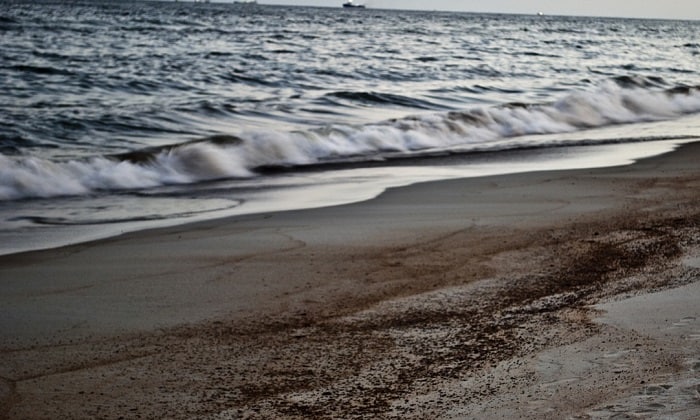
Pollution experts working with the Maritime and Coastguard Agency continue to tackle an oil slick in a bid to stop it reaching the Kent coast.
Both offshore containment and recovery equipment, and shoreline equipment, have been mobilised to the oil slick 12 nautical miles off east Kent and vessels are in the area to monitor the spill.
Possible causes are being investigated but at the moment the focus is on tackling the impact of any oil that comes ashore.
The MCA would work with local authorities in the event of the oil coming ashore.
It had been anticipated that the oil would reach the shore at Deal last night (July28) but latest models suggest it is moving more slowly towards the coast, providing environmental partners more time to minimise the impact.
A spokesperson for the Maritime and Coastguard Agency said: “We have already mobilised our oil spill response contractor to do all we can to deal with the consequences from this spill. Those contractors will be working to remove pollutants and minimise any potential pollutants coming to shore.
“We continue to monitor the situation through regular surveillance flights across the area and will update our ongoing response plan in response to that information. As well as this, we are working with local partners to ensure a coordinated response.
“Samples of the oil will be collected for testing to see if the source can be identified.”
The MCA continues to update its modelling to assess where any oil might come ashore.
The first report of the oil slick was made to the Maritime and Coastguard Agency by a Royal Navy vessel. Further investigations were then carried out to establish what the substance is and how much there is.
All indications are that this slick is the only oil and it is not a continuous stream.
Investigations are being carried out to find the source – these are ongoing. There does not appear to be any subsea infrastructure which would point to a pipeline release.
Coordination of response for shoreline pollution is carried out by the landowner or local authority.
In a county council briefing members were told that it is possible some water events, such as sailing and open water swimming, could be affected and KCC’s environmental team is looking at public health indicators.
The east Kent coast is home to seal colonies and Kent Wildlife Trust has raised concern for the welfare of the seal population and other wildlife should the spill not be contained. The oil can affect seals’ insulation abilities and they risk succumbing to hypothermia should they be covered in the oil.

